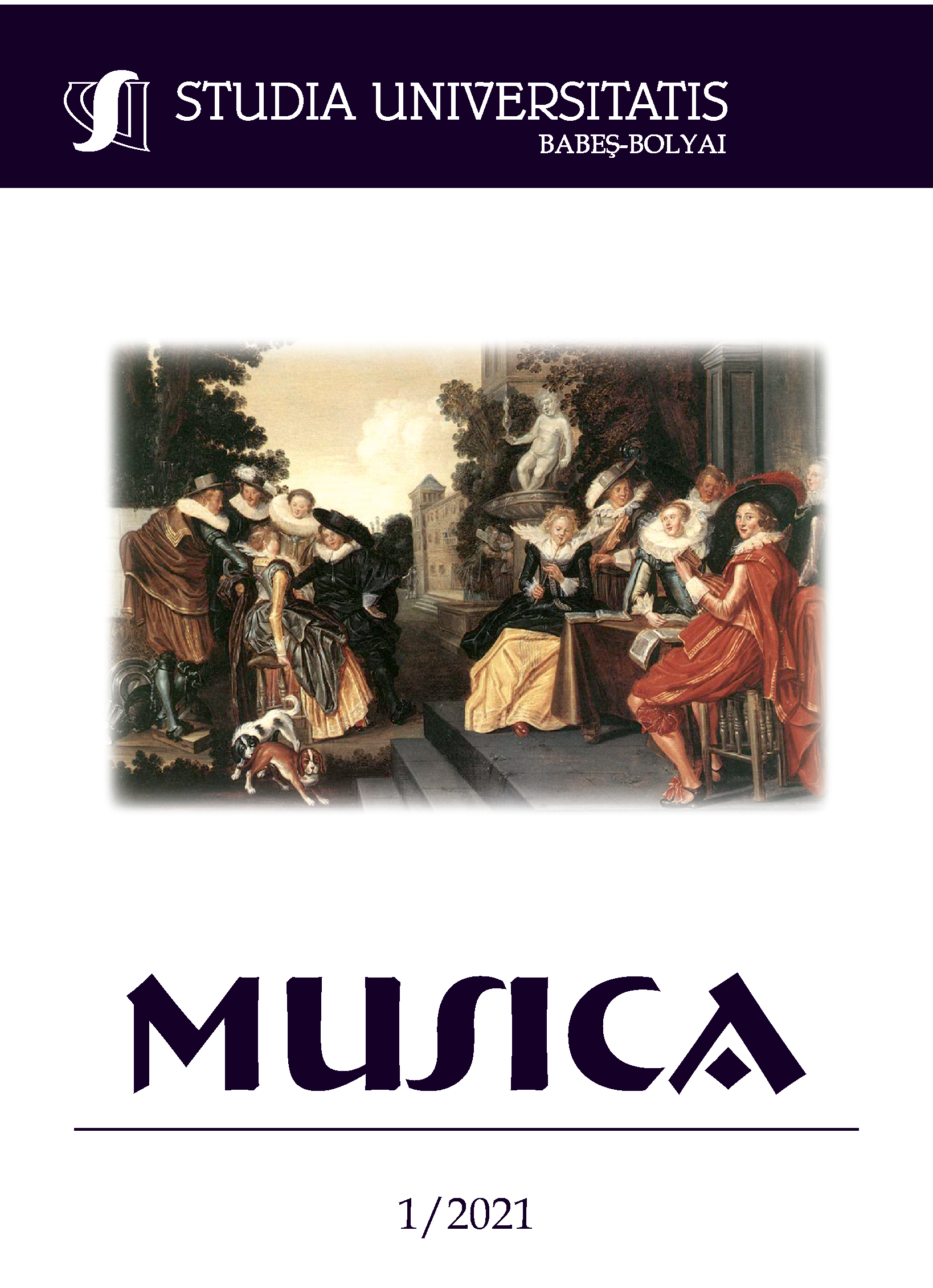COGNITION OF MUSICAL INSTRUMENTS AS AN INTEGRAL PART OF MUSIC TEACHERS COMPETENCIES
DOI:
https://doi.org/10.24193/subbmusica.2021.1.05Keywords:
instrumentation, orchestration, timbre, music education.Abstract
This article aims to reason the importance of the knowledge about musical instruments by future music educators. The cognition of musical instruments include competencies necessary for the handling of the instruments by instrument teachers, ensemble leaders, teachers-arrangers and teachers-composers. Another important field of knowledge is the characteristics of instruments and their artistic possibilities that teacher has to explain for pupils in their classes while listening to the music and discussing it. Considering these activities as an essential element of music educators’ work, the ability to distinguish the timbres of the most common professional instruments by ear should be treated as one of the fundamental abilities of pedagogues.
Rezumat. COGNIȚIA INSTRUMENTELOR MUZICALE CA PARTE INTEGRALĂ A COMPETENȚELOR PROFESORILOR DE MUZICĂ. Acest articol își propune să argumenteze importanța cunoștințelor despre instrumentele muzicale de către viitorii educatori muzicali. Cunoașterea instrumentelor muzicale include competențe necesare pentru manipularea instrumentelor de către profesori de instrumente, conducătorilor de ansambluri, profesorilor-aranjatori și profesorilor-compozitori. Un alt domeniu important al cunoașterii îl reprezintă caracteristicile instrumentelor și a posibilităților lor artistice, pe care profesorul trebuie să le explice elevilor din clasele lor, în timp ce ascultă muzica și discută despre ea. Considerând aceste activități ca elemente esențiale ale muncii educatorilor de muzică, capacitatea de a distinge după ureche timbrele celor mai comune instrumente profesionale, ar trebui tratată ca una dintre abilitățile fundamentale ale pedagogilor.
Cuvinte cheie: instrumentație, orchestrație, timbru, educație muzicală
References
Buzás, Zsuzsa, and Dudás, Eleonóra. “Testing the Knowledge of Musical Instruments of 10-14-year-old Students in an Online Test Environment.” The Wind Music Research Quarterly / Mitteilungsblatt der IGEB, 2021 March, International Society for Research and Promotion of Wind Music, pp. 27-32, https://www.igeb.net/uploads/1/1/4/6/114653395/2021march.pdf.
Cassidy, Jane W., and Schlegel, Amanda L. “The role of initial attack and performer expertise on instrument identification.” International Journal of Music Education, Vol. 34(2), 2016, pp. 186-195.
Condaris, Christine. “Correlating Methods of Teaching Aural Skills with Individual Learning Styles.” Athens Journal of Humanities & Arts, 2019, Volume 6, Issue 1, pp. 1-14.
Cutler, Timothy S. Orchestration and the Analysis of Tonal Music: Interaction between Orchestration and Other Musical Parameters in Selected Symphonic Compositions, c. 1785-1835. Doctoral dissertation. Yale University, 2000, UMI ProQuest Digital Dissertations, http://wwwlib.umi.com/dissertations/.
Lavengood, Megan, “A Musicological Approach to the Analysis of Timbre.” Timbre 2018: Timbre is A Many Splendored Thing, Program and abstracts, 4-7 July, 2018, Montréal, Québec, pp. 115-116.
Music Dictionary, 2017. https://www.dolmetsch.com/defsi1.htm.
Piličiauskas, Albertas, Muzikos pažinimas. Objektas, būdai ir adekvatumas. (The Cognition of Music. Subject, Method and Adequacy). Vilnius, Vaga, 1984.
Rushton, Julian. “The art of Orchestration.” The Cambridge Companion to the Orchestra. Ed. by Collin Lawson, Cambridge University Press, 2003 (first published), 2005 (reprinted), 2009 (digital) pp. 92-126.
Srinivasan, Asha, and Sullivan, David, and Fujinaga, Ichiro. “Recognition of isolated instrument tones by conservatory students.” Proceedings of the 2002 International Conference on Music Perception and Cognition. April 2002, https://www.researchgate.net/publication/260402276.
Stock, Jonathan P. J. “Orchestration as Structural Determinant: Mozart's Deployment of Woodwind Timbre in the Slow Movement of the C Minor Piano Concerto K. 491. Music & Letters, 1997, vol. 78, no. 2 (May), pp. 210-219.
The Free Dictionary by Farlex, 2003-2021, https://www.thefreedictionary.com/instrumentation.
Urniežius, Rytis. “Arrangement Competences of Music Teachers: Readiness to Meet Unexpected.” Musicologica Brunensia, vol. 55 no. 2, 2020, pp. 139-147.
Urniežius, Rytis. “Organognostika muzikos mokytojų rengimo sistemoje” (“Organognostics in the system of music teachers training”). Tiltai, Priedas: mokslo darbai, Nr. 20, Muzikinis ugdymas mokykloje: tradicijos ir inovacijos, 2004, pp. 63-68.
Римский-Корсаков, Николай, Основы оркестровки. [Rimsky-Korsakov, Nikolai, Principles of orchestration], Государственное музыкальное издательство, Москва, Ленинград, 1946.
Downloads
Published
How to Cite
Issue
Section
License
Copyright (c) 2021 Studia Universitatis Babeș-Bolyai Musica

This work is licensed under a Creative Commons Attribution-NonCommercial-NoDerivatives 4.0 International License.



